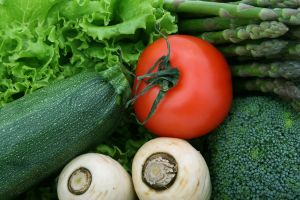Basic Guide to Easy Calorie Counting – Fruit and Vegetables
Do you want to know how many calories you’re eating? It can be a complicated game to play. When I first started counting calories it often involved pencil, paper, calculator and weighing scales, and it would take me a few minutes and some sums to calculate exactly how many calories I was eating.
These days I can estimate the calories of any meal just by looking at it – although I revert back to calculations if I want to be more accurate. But if sums aren’t your thing, calorie counting can be a lot easier if you remember a few shortcuts. You will still need the scales and calculator but its not necessary to measure every single item and you will need them less and less as you begin to recognise portion sizes.
If you are planning to count your daily calorie intake always have a pen and piece of paper handy, or your phone if it has note taking capabilities. Write down what you eat and how many calories it is, or your estimate. If you have no idea just write the food down anyway and you can estimate later.
I’m going to start by looking at fruit and vegetables and will do future posts on the other food groups.
Always round up calories to the nearest 10. There is no point dealing with lower values than that. It just makes the sums harder.
The calorie ranges below allow you to estimate for smaller or larger fruits or vegetables within the category.
Fruit
- Don’t bother weighing fruit
- Count a portion of berries, or a citrus fruit as 20-40
- Count an apple, pear, peach, handful of grapes or large slice of melon as 50-80
- Count a banana as 70-100
Vegetables – salad (ie normally raw and cold)
- Don’t bother weighing salad
- Count a portion of salad next to, or in your sandwich as 20 – this would include say a few lettuce leaves, some cucumber slices, celery sticks and half a tomato.
- Count a whole salad meal which is mainly lettuce based, with say cucumber, bell pepper, tomato, celery, bean sprouts and similar as 40-80
- If you have sweetcorn or onion in the salad add another 30-60
- Other ingredients in the salad such as dressing or proteins need to counted separately
Vegetables – dinner (ie normally cooked and hot)
- If you have a plain vegetable accompaniment to your dinner, for example, carrots, brocolli, cauliflower, and cabbage take these to be 50 in total
- If you have parsnip, or other similar root vegetables like turnip or celariac (but not carrot), peas, or sweetcorn, add 50-100
- Add 20 for mushrooms and 20 for bean sprouts
- Add 40 for each whole bell pepper, and 40 for each large onion
- A large corn on the cob is about 130
- A whole avocado is 200-300 calories because of the high fat content
Remember, the above are rough figures and not 100% accurate. Because fruit and vegetables are relatively low in calories (apart from the avocado) its a waste of time calculating these foods to the nearest calorie. Near enough is good enough in this case.
Keep an eye out for the next post in this series!



November 8th, 2011 at 15:56
[…] Finding calorie counting a hassle? Over at Live for Food there’s a quick way to estimate fruit and vegetable calories. […]